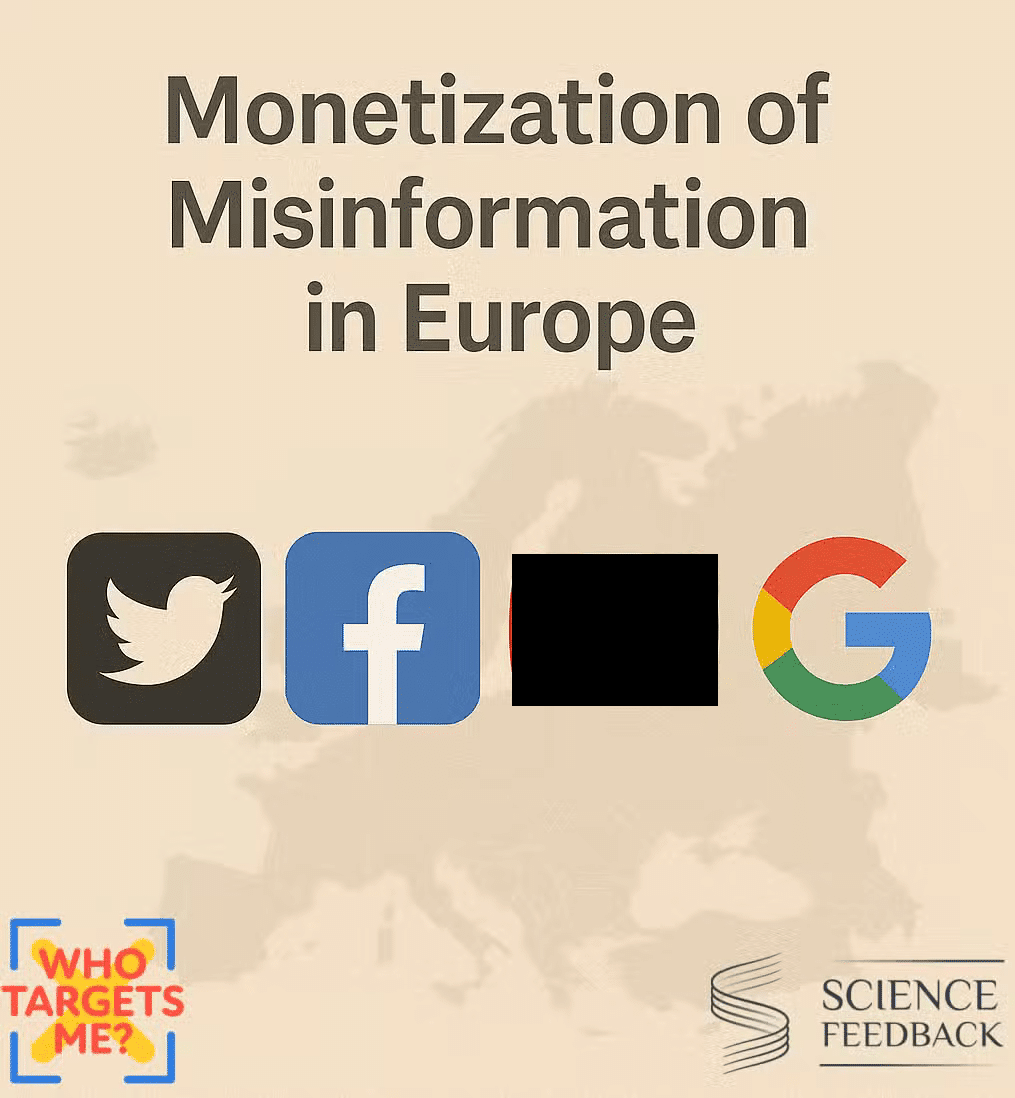Online misinformation pays. Why? Taking stock of a broad range of evidence

Cover image generated with AI
Executive summary
This report examines the financial infrastructure that enables misinformation in Europe through a broad analysis of advertising and monetization practices across major social media platforms and services offering ads on the open web (Facebook, Twitter/X, YouTube and Google Display Ads).
Monetization of Low-Credibility Content:
Approximately half of low-credibility accounts and websites are actively monetized across platforms:
- 55.6% of eligible low-credibility YouTube channels are monetized (vs. 75.0% of high-credibility channels),
- 48.1% of low-credibility websites carry Google Display Ads (vs. 79.2% of high-credibility sites),
- 41.7% of eligible low-credibility Facebook Pages are monetized (vs. 68.3% of high-credibility Pages).
Brand Safety and Ad Placement:
- Interviews with ad placement professionals suggest that advertisers largely rely on platforms’ default brand safety options. Tools and incentives to ensure strong scrutiny of the actors supported by advertising are overall lacking.
- Low-quality advertisers (promoting potential scams, questionable health products, get-rich-quick schemes) appeared in similar proportions on both high and low-credibility content on Twitter/X and YouTube, suggesting that brand safety choices, if any, did not have a material impact on ad placement.
By collecting a large dataset of ads, we were also able to audit whether the platforms’ ad repositories and political ad transparency satisfactorily met European Union requirements.
Political Ad Transparency:
- Facebook: 23.7% of political/social issue ads from non-political entities were not properly labeled,
- Twitter/X: At least 68 unique political ads were shown in Germany in the run-up to the February 2025 elections despite platform policies prohibiting them,
- YouTube: All political campaign ads were properly labeled, but issue-based ads that could influence elections are not covered by current policies.
Platform ad repositories:
- Twitter/X’s ad repository exhibits systematic technical issues making it largely unusable for research,
- One ad (out of 200) sampled from Facebook was not findable in the platform’s ad library.
- On YouTube, all ads sampled were found on the service’s ad repository.
Regulatory Considerations
These findings suggest that the systems used by Twitter/X, Meta and Google to ensure their platforms do not reward misinformation are insufficient. Meta and Google have withdrawn from key measures under the EU Code of Conduct on Disinformation that address monetization by repeat spreaders of misinformation, while Twitter/X has left the Code entirely.
The significant monetization of low-credibility content coupled with inadequate brand safety tools and inconsistent ad transparency practices warrants further attention from regulators assessing compliance with the Digital Services Act, particularly regarding systemic risk mitigation for civic discourse and compliance with relevant sections of the Code of Conduct on Disinformation.
Acknowledgements
The sole responsibility for any content supported by the European Media and Information Fund lies with the author(s) and it may not necessarily reflect the positions of the EMIF and the Fund Partners, the Calouste Gulbenkian Foundation and the European University Institute.



